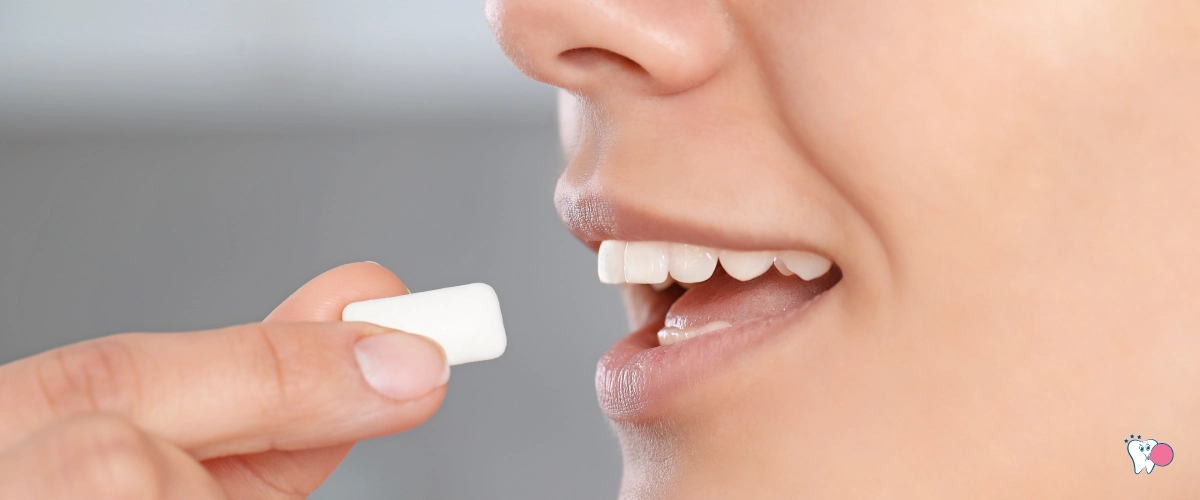Chewing gum may be small, but its impact is huge. Its health benefits positively affect both body and mind. Maybe that’s why people in Northern Europe chewed birch bark tar 9,000 years ago – and similar habits existed on other continents. Humans have been chewing since ancient times. The benefits of chewing persist to this day, even though many people have forgotten them. Just like many things from the past, when we relied more on instinct, intuition, and feelings than on scientific data or Google. That’s slowly changing. We are returning to nature – and that shift is becoming stronger.
Definition of Chewing Gum | Myths about Chewing Gum | Types of Chewing Gum | Healthy Chewing Gums | Benefits of Chewing Gum
Chewing Gum and Its History
Chewing gum consists of small pieces of synthetic or natural rubber, available in different flavors, shapes, textures, and fillings. It has a documented history of more than 9,000 years – and that’s only what has been proven. Its golden age came in the 19th century, when the first commercial gum was made and the world’s first gum factory was built. The USA was the cradle of modern chewing gum and led the commercial chewing gum era. Chewing was present across all inhabited continents.
Definition of Chewing Gum
There are many definitions of chewing gum. To me, gum is a sweet treat that connects body and soul within seconds. Everyone has a favorite flavor, and if they haven’t been discouraged by myths, they chew from childhood to older age. Since older generations often avoid gum, here are the myths – which are usually false and unfair.
Myths About Chewing Gum
1) Chewing gum pulls out fillings
Some claim that gum pulls out fillings or damages teeth. That’s not true. If your dentist has done proper work, chewing won’t dislodge anything. Dental materials and adhesives are far stronger than the pressure from chewing. If a filling comes loose while chewing, it likely would have come out during a meal anyway.
Choosing the right gum actually helps protect your teeth (dental hygiene)—just pick sugar-free chewing gum with xylitol.
2) Swallowing gum is dangerous
It’s often said that swallowing gum is dangerous or that it stays in your body for years. That’s a myth. Swallowed gum passes through the digestive system and exits naturally—without harm.
3) Chewing gums are toxic
Recently, chewing gum has been labeled as a “toxic” food. That’s partly true because many commercial gums contain controversial ingredients. But like most foods, there are better and worse options. Criticizing food is easy. Offering healthier alternatives is harder.
In the same store, you can find both ice cream full of additives and one with just five natural ingredients. It’s up to you whether you choose healthy chewing or commercial gum. Not all gums are toxic—some are made without plastic materials, preservatives, or artificial additives. You can find the gum that’s right for you.
Types of Chewing Gum
Gums can be divided into several categories. For me, the most important distinction today is this: if you chew just a little, it doesn’t matter what you chew. In small quantities, even sugary or synthetic gum won’t harm you. But if you chew regularly—or realize the great benefits—then you should understand the basic types and know that you have a choice.
During World War II, gum formulation changed. Natural raw materials were inconsistent, so producers switched to synthetic bases. These “improved” properties like flavor longevity—but health benefits dropped. Luckily, we now live in a time of returning to natural ingredients.
Chewing gum categories:
- 1) Sugared chewing gums
- 2) Sugar-free chewing gums
- A) Synthetic gum with artificial sweeteners and controversial ingredients
- B) Synthetic gum with natural xylitol and no controversial ingredients
- C) Natural gum base (chicle), sweetened with xylitol and made only with natural ingredients
What does this mean?
A) After WWII, most chewing gum started to be made from synthetic materials—plastic, artificial sweeteners, colorants, preservatives. If you throw gum on the street, you’re throwing plastic. And it’ll stay there for years. Please dispose of gum in the trash—ideally wrapped in paper so it doesn’t stick to bins.
B) If you chew often, avoid sugared gum and opt for sugar-free options. I recommend choosing healthy chewing gums—free of controversial ingredients, plastic-free, and chemical-free. Watch out for vague terms like “gum base”—this usually means synthetic plastic components. Look for gums with a natural gum base instead.
Healthy Chewing Gums Without “Controversial Ingredients”
If you want to chew cleanly—without artificial stuff—you’ll need to start checking ingredients. Just read the packaging. Maybe you’ve never done that before. That’s okay. You can start now.
There are two main routes:
- Buy synthetic gums sweetened with natural xylitol, but without ingredients like aspartame, acesulfame K, titanium dioxide, BHA/BHT, or artificial colorants, which don’t belong in your gum at all.
- Or go fully natural—look for gums made with xylitol and natural gum base from sustainable sources.
Benefits of Chewing Gum
Chewing gums may be small, but their benefits are huge. That’s probably why chewing has been a universal human habit for millennia. To keep it simple, here’s a list of key benefits. For full details, read our benefits of chewing article. And if you want to chew at the right times, check this guide on when to chew.
- Sugar-free gums with xylitol reduce plaque and acid in the mouth (dental hygiene)
- Stimulate saliva production – helping rinse away food particles
- Help with dry mouth – reducing the risk of infections and discomfort
- Reduce stress and support mental clarity – studies show chewing helps fight anxiety and even mild depression
- Burns extra calories and curbs appetite for sweets
- Gums can replace candy when you crave sugar (especially if you’re hooked on sweets)
- Improve focus and memory
- Eliminate bad breath – perfect after meals or before a meeting

